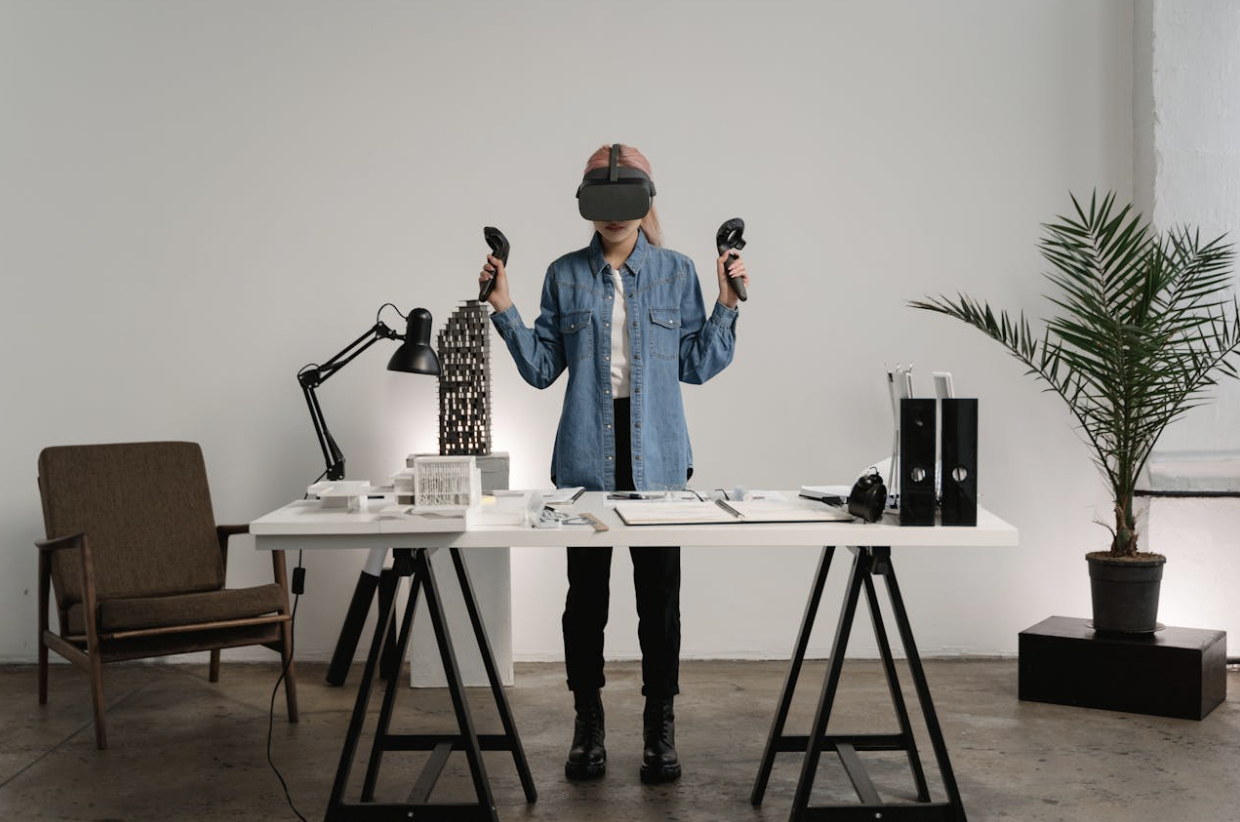Immersive Innovation: How VR is Shaping the Future of Design-Part 2
Posted on 25 Mar, 2025

Part 1 of this series, Nigel Carr Guest Blogger – Part 1, explored VR’s immersive potential and its transformative impact on design. Part 2 examines the practical benefits and limitations of today’s VR technology, focusing on hardware performance, market trends, and industry applications.
Newcomers often misinterpret early VR footage, comparing standalone devices to high-end PC systems. Recent advancements, as seen in the Quest 2, Quest 3, and PSVR2, have significantly improved resolution, refresh rates, and overall performance. The article also reviews VR’s expanding role in design, architecture, automotive, training, and collaboration.
Looking ahead, emerging developments—such as integrated AR features and next-generation operating systems—promise lighter, more powerful, and intuitive VR devices. This overview provides professionals with valuable insights into the evolving VR landscape and its diverse practical applications.
Performance Variations and Hardware Evolution
VR hardware has evolved significantly over recent years. Early standalone devices, such as the Quest 1, delivered lower resolution and refresh rates, leading some newcomers to compare its visuals unfavourably to older gaming systems. In contrast, PC VR titles like Half Life Alyx demonstrate the potential of high-end systems.
Recent advancements narrow this gap. The Quest 2, launched in October 2020, offers enhanced resolution and a steady 90Hz refresh rate. Its successor, the Quest 3, introduced in October 2023, nearly doubles chipset performance, supports refresh rates up to 120Hz, and incorporates mixed reality capabilities. Meanwhile, PlayStation’s PSVR2 brings improvements with eye tracking, foveated rendering, and haptic feedback. These developments mark a rapid progression in VR technology, providing more immersive and powerful experiences for a broad range of users.
The Expanding VR Market
The global VR market reached approximately $16bn in 2024, with forecasts predicting growth to between $50bn and $150bn by the decade's end as augmented reality gains traction. Since 2019, Meta has invested nearly $60bn in Reality Labs, highlighting strong industry confidence. Consumer trends reinforce this momentum; during Christmas 2024, more VR headsets were sold on Amazon in the US than game consoles, and the Meta headset setup app was the most downloaded free iPhone app that day.
Nigel Carr observes, "The surge in VR headset sales clearly signals that immersive technology is shifting from niche to mainstream." As hardware advances and accessibility improves, VR is poised to become a vital tool across industries, bridging the gap between innovative applications and everyday use.
Diverse Industry Applications
VR's utility spans a broad spectrum of industries beyond the creative realm. In design, Nigel Carr explains how VR enables professionals to refine CAD models within virtual environments, allowing clients to experience spaces in real time. This method supports rigorous evaluations of ergonomics, accessibility, and equipment placement, particularly in projects such as transport infrastructure.
Architecture, retail, and interior design benefit from immersive client walkthroughs that reduce misinterpretations and costly revisions. Automotive companies, including Ford and Mercedes-Benz, leverage VR for styling, engineering, and marketing, while facilitating remote collaboration among global teams.
Training and education are transformed by VR's capacity to simulate hazardous or complex scenarios—from firefighting drills to surgical procedures—enhancing engagement and knowledge retention. Additionally, virtual meeting spaces offer dynamic alternatives to traditional conference rooms, fostering efficient collaboration.
These diverse applications underscore VR’s potential to streamline workflows, improve communication, and drive innovation across multiple sectors.
Future Developments and the Convergence with AR
Future VR devices are expected to be lighter, more powerful, and more affordable. While VR headsets remain crucial for immersive experiences, AR glasses are evolving rapidly. Companies such as Xreal and Meta, in partnership with Ray-Ban, are developing lightweight smart glasses that offer augmented reality experiences, though they currently lack the full immersion provided by VR headsets.
Nigel Carr observes, “The immersive quality of a dedicated VR headset remains unmatched, even as AR glasses become more prevalent.” This sentiment reflects the industry's view that VR and AR will continue to serve different, yet complementary, purposes. Upcoming developments include next-generation operating systems, with Meta licensing Horizon OS to third-party manufacturers and Google collaborating with Samsung on an Android XR system. These systems are set to enhance eye and hand tracking capabilities and may incorporate AI assistants to improve user interaction.
This convergence promises a more connected and intelligent digital landscape, driving innovation across sectors from design and architecture to training and entertainment.
Embracing the Future of Immersive Technology
Advancements in VR are reshaping professional workflows. With powerful, accessible hardware and integrated AR features, immersive technology is becoming mainstream. Nigel Carr notes, "The surge in VR headset sales clearly signals that immersive technology is shifting from niche to mainstream." As VR transforms design, architecture, automotive, and training sectors, professionals must adapt.
March’s Guest Blogger was Nigel Carr
https://www.designdomain.ltd.uk/vr
For those keen to explore career opportunities, visit Careers in Design and begin your journey into the future of design.
Back to blogPosted in: Designers | Tagged: immersive innovation VR for designing Future of design innovation in design design Future of VR in design future of design using VR Virtual Reality
